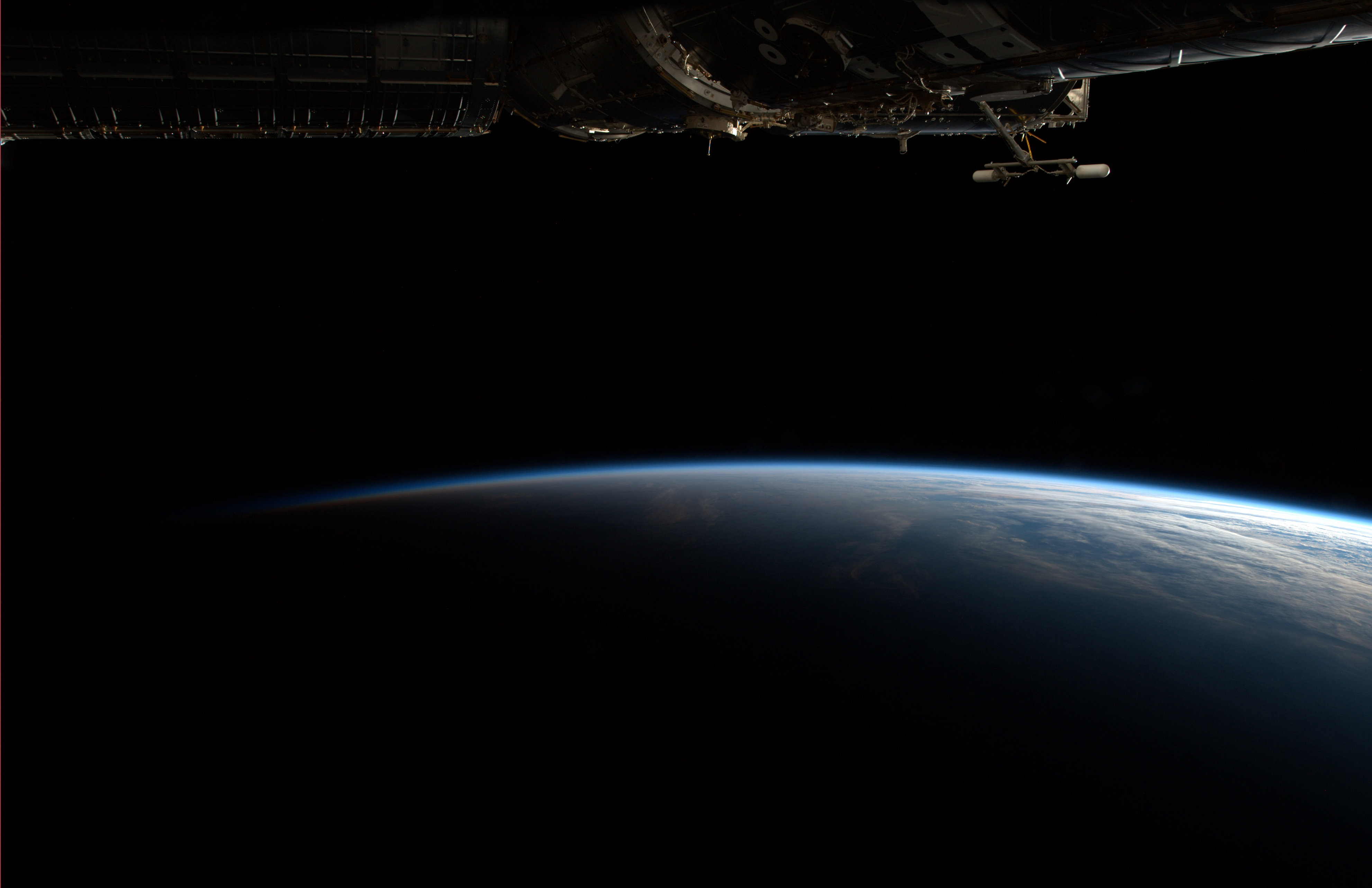
Twice a year, near the winter and summer solstices, the orbit ofspace station nearly parallels the terminator—the fuzzy line separatingday from night on the surface below. For a period of about a week, welive in what seems like perpetual twilight, being in neither fulldaylight nor full night. Our orbit follows the terminator, so that spacestation is constantly sunlit. From this vantage I can see both day andnight simply by swiveling my head from left to right. But the night isnot really dark, and the day is lit by low-angle rays from the Sun.
Geographic relief casts long shadows, and imparts stark contrast tofeatures that are typically overlooked. Small ripples in sand dunes makehigh contrast striations across the bright desert landscape that looklike Nature’s way of drawing with pen and ink. Geographic relief playstricks on you. First you see the Grand Canyon as this deep scar.Blink your eyes and it is now a rippling bump. Thunderstorms castshadows that look like they come from some new type of ray beam weapon.Airliners, their path defined by contrails, leave glimmering lines likesnail trails in the morning dew. The gardens of Earth appear to havequite an infestation of snails.
The Moon sets in a counterintuitive way. From this vantage it movesnearly parallel to the horizon. Once I saw it slowly set, only toreappear in a few minutes. The Moon was visible for nearly the wholeorbit.

The night side is equally fascinating. The atmosphere on edge glowswith a vibrant electric blue. Did van Gogh paint this scene? I can seeat least five, maybe six distinct layers of blue—perhaps a visualdisplay of the classic atmospheric strata. Just past the terminator,rays of sunlight can be seen projected above the darkened limb of theEarth.
The most striking aspect of our atmosphere is not the palette ofelectric blue colors but the thinness of it all. Our atmosphere is adiaphanous veil; thin, fragile, transparent, and the only thing thatprotects us from the harsh vacuum of space. Too much atmosphere, and theplanet is choked and suffocated. Too little, and it is exposed to theharshness of cosmic space. My vantage on the station gives me a deepappreciation of this fact.

Don, you are quite a poet, not to mention engineer, scientist, and explorer.
Beth
Awesome and beautiful. Can’t get enough of these pictures.
luis fernando verduzco reyna.
:psitico mental/ilucionista.
Imagenes pre cargadas en directo programacion de televicion
skype twitcam reproduccion de imagenes computacionales
monitor/plasma televisor.
psiquia mental.
Out of this World Photograghy,
Dear Don
Thanks for great photos!
Looking forward to watching fabulous ‘free liquid film’ experiments and others. (It was so nice to see you and have a talk in TKSC.)
See you soon.
Thank you Dr. Petit for this enjoyable reading, almost poetic way to describe the atmosphere!
Wonderful pictures and an entertaining story. Thank you and good luck to you.
You have written a beautiful description of creation. I see so much through your narrative.
I have a profound appreciation for Earth and better understand the vastness of the Universe and what it means to be a part of life in these times. Beautiful photos!!
Thank you.
WOW
Hi Don!
Yeah Don, you put it nicely .. Mike Fossum emphasised htat too when he was on board ..
It’s a real thin layer we got .. and you didn’t even mention hte ozone shortages over the poles.
we are in for a bumpy ride .. we the earth’s population from the granite rocks to hte oceans and all of earth’s inhabitants.
But im positive on hte whole matter .. technology hand in hand wiht nature … i put my trust in NASA and the well willingness of folks around hte globe .. so we can see this global ecologic crisis through
Light and Love! .. Betty Donelly
Liked very much the snails mataphor
🙂
It must be quite a sight…
Wonderful post and blog. Is it possible to access these photographs in high-res anywhere? They’re stunning.
Thanks! Happy trails.